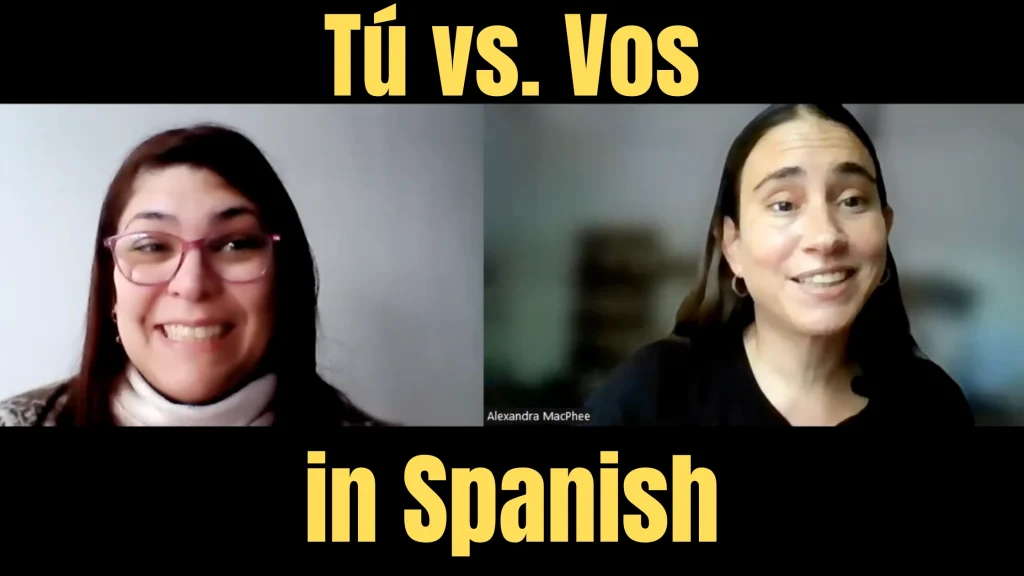Communication style is the way you say what you say – and it has huge implications on the results of a conversation between parties.
Pay special attention to this post if you have had frustrated negotiations, unresolved confrontations, or simply want to communicate more effectively across cultures.
It’s one thing to have language barrier between two parties, that’s not what we’re talking about here. It’s natural to have frustrated communication between people if there are language barriers, but I’m referring to a more subtle “mode” of communication. I, for example, have a VERY high proficiency in the Spanish language; which means that I’m certain that I have the words to communicate effectively in Spanish with the contractors and service providers that help make our Spanish immersion programs the amazing experiences that they are. But I’m a direct communicator, and I run a business with hundreds of moving parts in Costa Rica – which is a place where indirect communication is the preferred communication style.
It gives me a headache often, and I’m regularly reflecting on instances where I’ve been too direct and possibly offended people, but I’ve learned quite a bit over the years. Learning how to match the communication style of your audience is so important that it has a direct impact on your ability to relate to others. You don’t have to have an international business for this communication style to matter – maybe you’re a healthcare professional and you need to be persuasive with a patient (or bear bad news), maybe you’re a plant manager working with a team of Latinos that you want to lead well and inspire, maybe you’re in sales and you’re trying to close deals with indirect communicators – everyone has something to gain by matching the communication style of the people you’re trying to work with.
The focus of this blog post is to help direct communicators adopt a more indirect communication style in Spanish. It is a difficult task for the direct communicator to slow down, think out of the box, and make subtleties a priority in conversation, but it’s extremely important to modify your style. For me, personally, it’s a matter of actually planning the conversation beforehand and constantly reminding myself that I need to take conversational “baby-steps” toward my end goal. For me an indirect communication style feels slow and inefficient, and I love how “easy” it feels when I meet another direct communicator. However, if I don’t make adjustments and adopt a more indirect communication style with others who are indirect communicators, I’ll screw up the conversation, hurt feelings, or build walls between people instead of accomplishing the true goals of the given conversation.
What does an indirect communication style look like?
Thankfully I’ve had lots of opportunities to see this in action. As I write this blog post, I’m currently in Costa Rica working our Spanish Immersion programs. While I’m usually pretty slow to pick up on this, just the other day some indirect communication happened in textbook fashion. I was headed somewhere with a trusted taxi driver and he wanted to invite me and my family to dinner at his home. But it took about 4 – 5 minutes for the invitation to come. Here is a brief summary (more details in-between the lines of course) of how the conversation went:
Taxi Driver: So, what are you and the family up to this weekend?
Me: Oh, we finally have a weekend without any plans – I think we’re going to relax.
Taxi Driver: Yes, me too – my uncle will be driving the taxi all weekend.
Me: That’s great, what about your wife, does she have to work on Saturday morning?
Taxi Driver: She does, but only in the morning. She gets off at 12:00p and we will have the afternoon free.
Me: That will be nice to relax, you guys work hard.
Taxi Driver: You know where I live, right? Have you ever been to my house?
Me: Yes, you live up on the dirt road between “x” and “y” street – right? We’ve walked by and I think we’ve seen your 18-wheeler before.
Taxi Driver: Yes, I had to sell it when the economy collapsed, but we do live on that street still. We would love to have you come over to our house some time if you ever have a free afternoon.
Me: That sounds great, we would love to come over to your house. Do you think we’ll be able to fit it in this trip?
Taxi Driver: Well, what about this weekend, can you come over on Saturday?
Me: I think so, I’ll check with my wife, but I’m pretty sure we can. Can we bring anything?
So there it was, a 4-5 minute conversation that would have started and ended in less than 1 minute if I had been talking to anyone in my normal circle of friends back home. I would have asked: “Hey, what are you guys up to Saturday night – want to come over and grill?” They would have either accepted (or declined with an excuse) immediately or double checked with their spouse and sent me a text later to confirm.
For some time, I thought that direct communication was a superior mode of communication. Then I started to realize that it’s just different and it doesn’t really matter why people prefer an indirect communication style, it just matters that they do. So, if I want to effectively communicate, I need to figure out how to communicate indirectly as well. This is a concept that is based on the supposition that, in most cases, you really aren’t going to change anyone else, so if you want to improve relationships, negotiations, etc – you better take some responsibility and make any adjustments that are within your own power to make and see if you can improve your effectiveness communicating.
On our Spanish immersion programs in Costa Rica, this direct vs indirect communication style tends to pop up most when our students are trying to communicate their preferences for food and other activities with their host families. They recognize the effort their host family is putting into their lodging arrangement, but they need to be able to communicate their likes/dislikes so that they don’t get stuck eating a kilo of rice and beans every day. The extra difficulty in this scenario is that usually the basic Spanish student lacks the “subtle” vocabulary to communicate preferences because they are just now getting the hang of saying “I like / I don’t like”. So this presents some additional challenges, but there are still ways to communicate indirectly when language skills lack.
So how do you do it? What is the trick to communicating indirectly with someone if you’re a direct communicator? The best answer is that there isn’t a formula. There is no formula for learning another communication style, but there is a process you can employ that will help you match your style with another person’s communication style. Give this a try the next chance you get:
- Observe: Communication style is so personal that you would never want to assume that someone is going to communicate a certain way just because of the color of their skin or the sound of their last name. Your best bet is to observe with an insightful ear how this person tends to communicate. How do they communicate with their co-workers, friends and family members; are they straight and to the point or do they seem to suggest things and test the waters with ideas? The most effective communicators are those who are students of their audience and who understand how their audience prefers to communicate.
- Mimic: Once you have a sense for how this person likes to communicate because you’ve seen it in action, try to mimic it. If this person prefers to get from A – Z in 2 steps, try it out the next time you’re talking with him/her! If they prefer to get from A – Z in 15 steps, you better at least give it 15 – 20 steps between the start and conclusion of your conversation. Remember, it’s not silly to mimic someone else’s style – it’s effective!
- Reflect: After you’ve observed and mimicked, reflect on what happened and how it went. Some things to ask yourself might be:
- What were my initial goals for this conversation?
- What assumptions did I make about this other person based on my observations?
- What did I try to intentionally do to adjust my communication style?
- Did I achieve the desired results of the conversation?
- What could/should I try differently next time?





